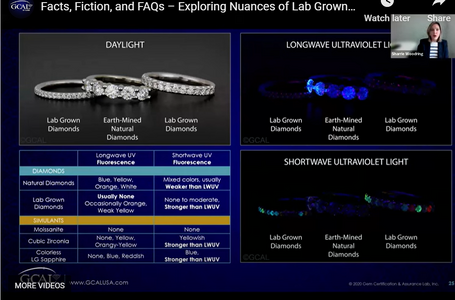- Joined
- Apr 30, 2005
- Messages
- 34,634
The title says it all.
I read how natural and LG diamonds have the exact same properties.
Sorry, I can't ignore the elephant in this room that begs the question.
I'm wondering whether GIA can tell LG from earth-mined.
Of course if GIA can't, that would have to remain a huge dark secret which must (like the recipe for Coke) be as closely guarded as the nuclear launch codes.
... because if revealed ... well, let's just not go there.
So if GIA can tell ... what IS the difference, and exactly how does GIA tell the difference? ... in layman's terms of course, if that's even possible.
And does the ID method require very advanced knowledge and costly instruments that less well-endowed labs would not have, much as what GIA uses needed to identify which green FCDs got their green from natural radiation in the earth over millions of years vs. radiation in a lab.
Legit and honest question since we natural lovers are still expected to pay natural prices.
I'm sure I'm not the only one wondering.
I'm sorry that this is (to say the least) an awkward question here ... and one that won't make me any friends.
But an inquisitive poster gotta ask what an inquisitive poster's gotta ask.
I read how natural and LG diamonds have the exact same properties.
Sorry, I can't ignore the elephant in this room that begs the question.
I'm wondering whether GIA can tell LG from earth-mined.
Of course if GIA can't, that would have to remain a huge dark secret which must (like the recipe for Coke) be as closely guarded as the nuclear launch codes.
... because if revealed ... well, let's just not go there.
So if GIA can tell ... what IS the difference, and exactly how does GIA tell the difference? ... in layman's terms of course, if that's even possible.
And does the ID method require very advanced knowledge and costly instruments that less well-endowed labs would not have, much as what GIA uses needed to identify which green FCDs got their green from natural radiation in the earth over millions of years vs. radiation in a lab.
Legit and honest question since we natural lovers are still expected to pay natural prices.
I'm sure I'm not the only one wondering.
I'm sorry that this is (to say the least) an awkward question here ... and one that won't make me any friends.
But an inquisitive poster gotta ask what an inquisitive poster's gotta ask.
Last edited:





300x240.png)